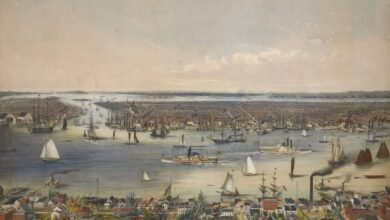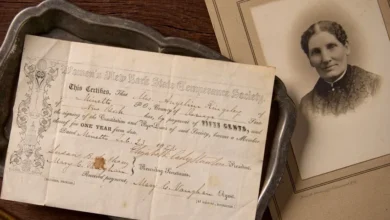Seth Green: The Father of American Fish Culture and a Pioneer in Conservation


 Seth Green, born on March 19, 1817, to a poor farming family in what was then a remote area along Culver Road in Rochester, New York, is considered the father of American fish culture and aquaculture.
Seth Green, born on March 19, 1817, to a poor farming family in what was then a remote area along Culver Road in Rochester, New York, is considered the father of American fish culture and aquaculture.
At the time of his birth, Rochester was not yet a city, and the surrounding Genesee Valley was by then sparsely populated, and inhabited by wildlife such as bears, wolves, and rattlesnakes.
Green’s early life was defined by the hard realities of pioneer living, and his family later moved to the developing area of Carthage, near the Lower Falls of the Genesee River, in the town of Wilna. There, they opened a tavern, marking a turning point in Seth’s life.
Growing up, Green formed a lasting bond with local Seneca people, who taught him traditional hunting and fishing techniques. One local legend has it that Green could identify hundreds of animals simply by the sound of their footsteps.
As a young man, Green began fishing the Genesee River, catching trout, sturgeon, walleye, and bullhead, and selling them to residents and shipping crews.
This passion for fishing soon turned into a thriving business, and by 1857, Green had become one of the largest market fish producers in New York State, with a workforce of 100 men hauling in anywhere from 12 to 25 tons of fish each month.
In 1864, Green sought the ideal conditions to further his work in fish propagation. He discovered that Caledonia Creek, with its fresh springs and a constant temperature of 45-60 degrees, was perfect for hatching brook trout.

 There, he established the Caledonia Fish Hatchery, which became the first successful fish hatchery in New York and the nation. This pioneering venture marked the beginning of Green’s work in artificial propagation, a field he would revolutionize.
There, he established the Caledonia Fish Hatchery, which became the first successful fish hatchery in New York and the nation. This pioneering venture marked the beginning of Green’s work in artificial propagation, a field he would revolutionize.
The Caledonia Hatchery, located in Livingston County, remains in operation today as the oldest hatchery in New York State and the United States. It continues to rear brown trout and a limited number of splake (a hybrid of speckled and lake trout), producing approximately 170,000 pounds of fish annually, much of which is used in the New York State Department of Environmental Conservation’s stocking program.
Green’s contributions to aquaculture did not go unnoticed. He was awarded numerous honors for his groundbreaking work, including gold medals from the Imperial Acclimatization Society of France in 1872 and 1875 for his achievements in fish culture. Additionally, he actively promoted the fishing reel, a tool that remains integral to the sport of fishing today.
Beyond his technical achievements, Green’s influence extended to conservation and education. The Seth Green Trail in Rochester honors his legacy, and Seth Green Island, located along the Genesee River, serves as a lasting tribute to his work.
His commitment to sustainability and environmental awareness resonates in modern educational programs, such as those at Roberto Clemente School #8 in Rochester, where students learn about Green’s contributions as part of their curriculum.

 Green’s worldview was deeply influenced by his friendship with the Seneca, who taught him to approach nature with reverence and respect. In many ways, he saw the world through their eyes, incorporating their ancient understanding of the land into his own scientific and philosophical outlook.
Green’s worldview was deeply influenced by his friendship with the Seneca, who taught him to approach nature with reverence and respect. In many ways, he saw the world through their eyes, incorporating their ancient understanding of the land into his own scientific and philosophical outlook.
Green’s work is a beautiful example of two cultures coming together to promote mutual awareness and reciprocity.
Seth Green passed away on August 18, 1888, and is buried in Mount Hope Cemetery in Rochester. His legacy continues to inspire those who care about conservation, aquaculture, and the natural world.
As a father of American pisciculture and aquaculture, Seth Green remains an important figure in American history who helped shape the way we interact with and preserve our aquatic resources.
Illustrations, from above: Seth Green from his work Trout Culture (1870), Caledonia Fish Hatchery, circa 1879; and Green’s grave-site in Rochester.
Source link





